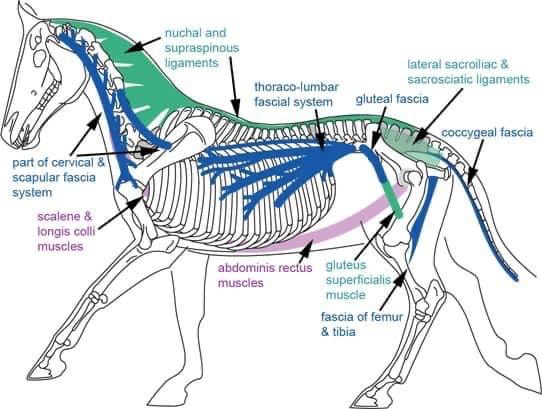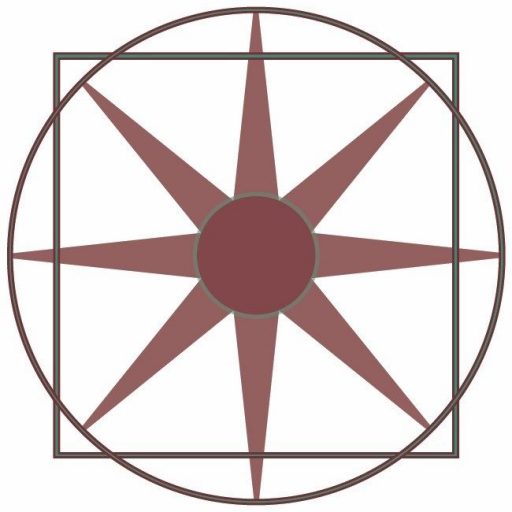Osteopathic Rehabilitation Performance and Fitness Clinic
Getting a horse back to fitness and functionality following an injury is a painstaking process. It requires excellent horsemanship to ensure the patient is treated as an individual. Equine physical rehabilitation has numerous goals, including assisting in injury recovery, improving patient mobility, alleviating signs of illness, and maintaining health through strength training.
Many signs and behavioral changes in horses can indicate a need for physical rehabilitation. Changes in performance, uneven or stiff movements, and refusal to perform previously accomplished actions may all signal pain or disability.
Over 60% of a horse’s body weight is muscle. Muscular stress can lead to decreased performance, lowered endurance, and frequent injury. Incorrect muscle tone and fitness leads to poor posture.
Osteopathy combined with specific exercises on the ground and ridden, along with treadmill or swimming exercise can alleviate muscular tension, reduce muscle spasms, decrease stress, increase flexibility and strength of joints, and lower injury rate by enhancing muscle tone and range of motion (ROM).


Potential Indications for Rehabilitation Therapy
Potential Indications for Rehabilitation Therapy
- Uneven Shoe wear
- Stiffness on one rein
- Disunited Canter
- Sore areas on the spine
- Unexplained lameness
- Mobility problems
- Uneven muscle tone
- Carrying the tail to one side
- Poor or reduced performance
- Unlevel or uneven steps
Behavioural Changes
- Rearing or bucking
- Refusing to jump fences or reluctance to jump
- Refusing turns
- Dipping
- Flinching
- Violent Tail swishing while the back is being groomed
- Lapse (decline or deviation in a horse from its usual state or condition or falling from a previous standard of health,
- performance, or behaviour
- Head shyness
- Refusing saddle
- Refusing to stand still when being mounted
- Reluctance or difficulty maintaining an outline or engaging hindquarters (difficulty in gait and movement when required to stay in conformation, in a rhythm, or on a designated track)
Frandson RD:Anatomy and Physiology of Farm Animals, ed 4.Philadelphia, Lea & Febiger, 1986.
It is commonly accepted that when a person is not eating or sleeping well, has an ache or pain somewhere or is just not feeling quite 100%, their behaviour may change and their work can be affected; indeed my work within my Osteopathic human clinics are very much focused on the cause of physical pain and to address lifestyle changes to achieve long term health and well being.
It is no different with horses suffering from pain or discomfort physically or mentally. In a startling short period of time so much can go wrong. Not just in a deterioration in performance and intermittent lameness but loss of condition and the development of so-called “stable vices”, such as weaving, box-walking, etc.
A young horse can just as easily have sore spots and tensions within its body as an older horse in need of further training work or re-schooling
Osteopaths are trained to relieve chronic pain, enhance performance, and help prevent injuries.
They begin by designing therapeutic programs based upon diagnoses, assessments, and goals of the horses’ vets, owners, and trainers.
Poor Performance in horses
Just about every rider has been through the scenario of riding their horse and it’s just not feeling right. Commonly it is put down to the horse having an off day but how many “off days”. If you have any questions please don’t hesitate to contact us.
Further information on the Equine Treadmill
A better understanding of the fitness benefits of regular water treadmill exercise including the overall wellbeing of the horse is becoming more documented, as its use has been increasing.
I have had experience of their effectiveness over the years, in all area of the equine sport both as a fitness tool for competition, maintaining general fitness levels between, and in all areas of rehabilitation. Many top competition yards have installed them to use as a part of their exercise and fitness programs, and the newer models have the ability to be adapted to each individual animal.
Environmental restrictions are a given in this country. This along with time and staff limitations, maintaining all year round fitness has always been difficult. There are now the facilities and oportunities to compete in all types of equestrian disciplines all year round which puts more pressure on our horses.
Unfit horses like people are inevitably more susceptible to injury
The treadmill provides a highly effective full body workout in a controlled working environment without rider involvement.
Evidence indicates treadmills initiate aerobic exercise (cardio exercise). Which by definition means ‘with oxygen’. It increases breathing and heart rate and therefore the uptake of oxygen. This low intensity exercise relies on oxygen for the metabolism of carbohydrates proteins and fats subsequently burning calories for energy.
Evidence also shows that there is no significant increase in heart rate as the water level increases possibly due to the extra buoyancy initiating the reduction in body weight and the increased venous return due to the water pressure.
The extra drag caused by the water pressure (hydrostatic pressure; 12 x more than air) increases the joint flexion and increased muscle activity. This increases range over movement of the lower limbs increasing stride length, firing the abdominal muscles and biomechanically translating to initiate suppleness throughout the back muscles and subsequently building up the top line.
This reduction in weight baring also reduces the concussion element on joints and associated strain on soft tissue structures, as well as the inevitable wear and tear usually associated with fitness workout exercise.
Hydrostatic pressure is fantastically supportive as it creates 3D pressure around the limb.
Osteopathy not only addresses injury’s but promotes long term postural health, wellbeing and fitness to reduce reinjury improve biomechanics, performance for the long term.
We provide a full working diagnostic report alongside your veterinary diagnosis. This includes a full rehabilitation plan.
Differential diagnosis is a systematic process used to identify the proper diagnosis from a set of possible competing diagnoses
A diagnostic process involves identifying or determining the ethology of a disease or condition through evaluation of patient history, physical examination, and review of laboratory data or diagnostic imaging and the subsequent descriptive title of that finding.
Osteopathic differential diagnosis is different from clinical reasoning in other health professions. Osteopaths use a two-phase approach: an initial biomedical screen for serious pathology, followed by use of osteopathic reasoning models that are based on the relationship between structure and function in the body.
Often an Osteopathic working diagnosis does not name a medical condition, but rather to guide the selection of treatment approaches. This will include adjustments in posture exercise diet etc alongside the conventional medical approach.
This Osteopathic approach gives a unique perspective to bring to multidisciplinary decision making and potentially enhance the quality of equine care.
Contact Us
